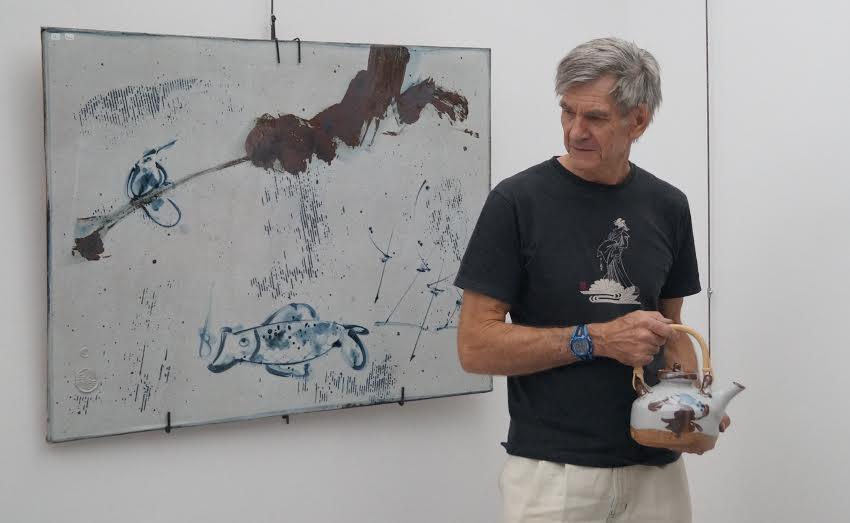
In today’s tightly controlled museum environments, one doesn’t expect to come across shelves filled from floor to-ceiling and wall-to-wall with closely packed ceramic pots and artefacts such as can be seen at the Phansi Museum in Glenwood, Durban. The Museum houses one of the finest collections of African and Zulu clay vessels in the country. The collection of clay figurines, pots, and artefacts vary from small and fragile to large, elaborate burnished, carved and embossed ceramic vessels to rough, oversized jars and containers. One thing is certain however; the collection appropriately signifies the prominence and importance of clay in the daily lives and rituals of a people who had a special engagement and connection with clay.
On Saturday, 14 May 2016, the Phansi Museum will launch an exhibition titled Earth-Water-Fire; a festival of clay. Clay has often been referred to as the oldest medium and one of the few mentioned in the Bible (man is formed from clay) and as a material that has created masses of objects, both historical and archaeological. The exhibition will celebrate the diversity and characteristics of clay; the digging, the shaping and moulding, the decorating and the firing. The exhibition will also honour two prominent potters, Andrew Walford and Ntombi Nala. Although both artists reside in KwaZulu Natal, they come from two very different worlds; Andrew from the rolling foothills of Shongweni and Ntombi from the rural area of Entumeni near Eshowe, yet, together they have succeeded in reaching the same heights of virtuosity, aesthetic beauty and functionality in their work.
Andrew Walford is arguably the leading exponent in South Africa of the Anglo-Oriental ceramic tradition and has been referred to as a hands-on, intuitive artist who is singularly involved in every aspect of making the ceramic item; from digging his own clay in the Drakensberg Mountain to using sand for glazes from KwaXimba valley, water from a spring in Nshongweni Kwazulu and firing in his three oil-fired kilns. In 2013, Andrew received a gold award at the Mungyeong Chasabal Festival in Korea. He has travelled to England, Sweden, Germany, Singapore, Bangkok, Hong Kong, Japan and Korea where he exhibited, taught, viewed and practised art.
Ntombi Nala comes from a long line of potters from the Nala family. She is known for her very large clay vessels that can take four to six weeks to construct. Her vessels are smoked in a pit fire to blacken them and then polished with oil. Her large burnished vessels with intricate design are known for their extremely glossy shine and often feature very small mouths and foot proportions. Ntombi also incorporates beadwork on her ceramics which requires a large amount of preparation and planning. Her work is featured in numerous national collections and retails from a number of international outlets.
To supplement the exhibition, a selection of historical hand-built, pit-fired vessels from the Phansi Museum’s permanent collection and works by late Maggie Mikula will be juxtaposed with a selection of contemporary vessels created in the same genre by ceramic artists from Rorkes Drift, Clive Sithole, Phumlani Nyawo and Frank Ntunya. Also included on the exhibition is a special collection of traditional Zulu clay toys and figurines.
The opening will be conducted by Reverend Arthur Sibisi and will include the presentation of Frank Jolles’ book, Zulu Beer Vessels in the 20th Century.
The exhibition forms part of a festival of clay which will include workshops and demonstrations presented in collaboration with the KZNSA and the BAT Centre.
The exhibition closes on 30 July 2016 and is open to the public.
Disclaimer: Any views expressed by individuals and organisations are their own and do not in any way represent the views of The Heritage Portal.
